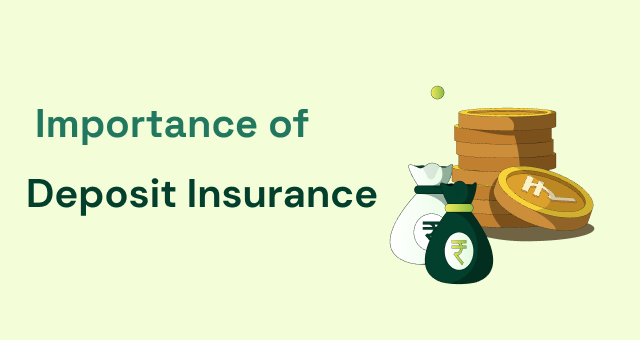
When comparing these two banks, there’s a clear distinction. One is a well-established public sector bank with decades of reliability, and the other is a relatively newer SFB with limited access and basic banking services. Naturally, you might wonder about the safety of depositing or investing in a bank like Utkarsh over SBI. But could it be more profitable for you? Let’s dive deeper:
Utkarsh, like all banks in India, is insured by the DICGC. This means that in case of insolvency, a depositor is insured up to Rs 5 lakh. This amount will be given to depositors by the liquidators.
Utkarsh has a liquidity management policy in place, which includes maintaining a liquidity coverage ratio (LCR) above regulatory requirements.
Utkarsh also has a comprehensive insurance plan to minimize all types of losses to the bank. This includes everything from loss of equipment and theft to mergers and third-party liabilities.
Being an SFB, Utkarsh adheres to regulations set by the RBI. According to the Statutory Liquidity Ratio and Cash Reserve Ratio, Utkarsh must set aside 22.25% of their deposits. Moreover, it must maintain a Capital Adequacy Ratio of 15% and is not allowed to lend more than 10% of its capital to a single borrower.
With all this in mind, it can be understood that Utkarsh Bank’s coverage policies are as safe as SBI’s. The key question now is whether you should consider depositing in Utkarsh Bank.
Currently, Utkarsh Bank’s FD interest rates range between 4%-8%, which is about 2% higher than SBI. Apart from factors like limited branches, investing in Utkarsh Bank might be a good way for you to diversify.
Check out this Table to Understand Better
| Bank | Tenure | Interest Rate (per annum) |
| Utkarsh Bank | 7 Days to 45 Days | 4.00% |
| Utkarsh Bank | 46 Days to 90 Days | 4.75% |
| Utkarsh Bank | 91 Days to 180 Days | 5.50% |
| Utkarsh Bank | 181 Days to 364 Days | 6.50% |
| Utkarsh Bank | 365 Days to 699 Days | 7.75% |
| Utkarsh Bank | 700 Days | 8.25% |
| Utkarsh Bank | 701 Days up to 5 Years | 7.50% |
| Utkarsh Bank | Above 5 Years to 10 Years | 7.00% |
| SBI | 1 year to less than 2 years | 5.50% |
| SBI | 2 years to less than 3 years | 5.70% |
| SBI | 3 years to less than 5 years | 5.75% |
| SBI | 5 years to 10 years | 5.80% |
That being said, it is important to note that on factors like operational risk, market risk, and regulatory risk, Utkarsh Bank might not have the widest scope for stability, like SBI. It’s important to not put your eggs in one basket and look carefully into the coverages that might help you in the event of a fall.
Knowing a bank’s coverage policies inside out is the first step for you to ensure safety of your money. It’s also important to look into how much coverage a policy can bring to your deposits and how you can take safer measures and increase coverage.
Where Should You Invest: Utkarsh Small Finance Bank or SBI?
If you’re looking for higher returns and are willing to consider a smaller bank, Utkarsh Small Finance Bank offers attractive interest rates on fixed deposits, with rates up to 8.25%. However, if you prioritize stability and prefer investing with a well-established institution, SBI offers lower but steady returns, with a slightly safer track record due to its long-standing presence. For those seeking higher returns and can manage limited branch access, Utkarsh might be a better choice, while SBI suits those who value trust and accessibility.

